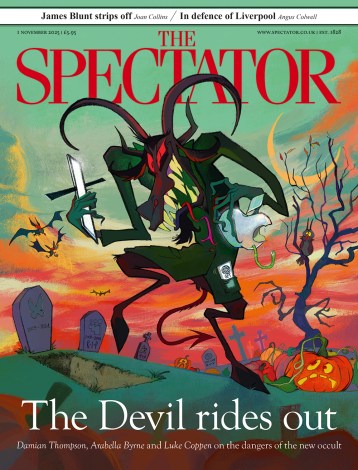Julius Caesar
Courtyard Theatre, Stratford-upon-Avon
Romulus and Remus, at least in the flesh, aren’t usually numbered among the dramatis personae of Shakespeare’s Julius Caesar. The famous sculpture of the she-wolf suckling Rome’s founding twins is a not unfamilar sight in modern productions. It’s also favoured by Lucy Bailey as an iconic image for launching her terrific directorial debut for the RSC. As the audience assembles, the lupine sculpture presides over two athletic young men in grubby loincloths wrestling together: at first it is playfully, then ever more violently. Following a crescendo of grunts and shrieks, the bloody corpse of Remus is left upon the stage, the lights go down and the play can begin.
The point, obviously enough, is to underline the irony that civilisation is ever suckled by barbarism. Few would have dared to voice that idea in 1599 at the court of the ageing Elizabeth, but Shakespeare knew that his re-telling of the assassination of the self-deifying Caesar and its bloody consequences would not lack resonance in a London rife with anxieties about the succession and the likelihood of civil war. Very likely the text was too near the bone for anyone to risk publication — it isn’t seen in print until the First Folio of 1623.
Bailey stays true to her opening gambit, for this is as noisesome and violent a Julius Caesar as you might wish to see. She and her brilliant designer William Dudley, with chillingly brazen music by Django Bates, sustain a feeling of imminent Götterdämmerung. It’s done with the best use of projections yet seen in the Courtyard, making it seem as though the entire theatre is teeming with the Roman populace.
The theatrical thrills on offer are not always quite matched by the acting. The problem is simply that the play’s real tragedy is that of Brutus, and that Greg Hicks, unforgettable conspirator in the RSC’s 2001 staging, is here relegated to the far less interesting role of Caesar. With a physique exactly sculpted to our stereotypical picture of the stern, curly-fringed, ah yes, Roman-nosed classical hero, Hicks is of course a nicely proud and testy Caesar. Irritable, quirky and so supremely self-confident that he can petulantly throw off the pomposity of ‘…for always I am Caesar’ as though it were ironical self-deprecation. He even manages to look good in the white Arabian pyjamas characteristic of the awful arty costumes inflicted on the patricians in the run up to the Ides of March. You couldn’t wait for the civil war to begin so everyone could strap into their leather battle-gear.
It’s Sam Troughton, scion of a distinguished actor father, who has the thankless task of playing Brutus on the same stage as Hicks. Here you have a wholesome-looking young actor, thoughful, intelligent but leaving you wondering why on earth crafty men like Cassius and Casca had plumped for so uncharismatic a figure as their answer to Caesar. Unequal to the introspective intensity, the tussle between ambition, revulsion and self-doubt, required for Brutus Part 1, Troughton discovers his real strength in the great quarrel scene with John Mackay’s excellent Cassius which culminates in a truly moving reconciliation on the eve of battle. Thereafter Troughton has the heft to carry the role through to a death which, as brilliantly imagined by Lucy Bailey, is not quite the one he or you were expecting.
Darrell d’Silva is the sweaty, perpetually blood-soaked, richly emotional Mark Antony, with Oliver Ryan making something sharp and distinctive of Casca. The enduring impression created by this visceral, always visually arresting production, is of truth to Shakespeare’s apprehension that the forcible removal of a tyrant is no guarantee whatsoever that anything will be a jot better thereafter.





Comments